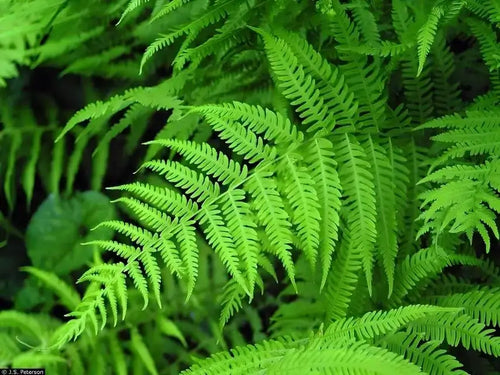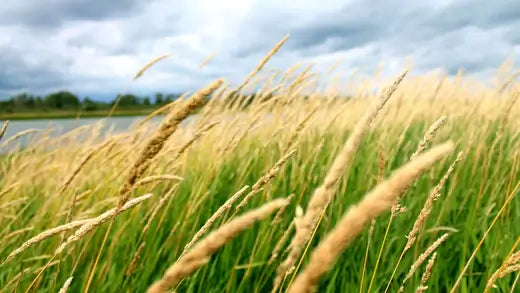Native Ferns
Growing native ferns can be a rewarding experience, especially if you're looking to bring lush foliage and delicate blooms to your garden. With some time, effort, and care, these gorgeous plants have the potential to become the highlight of your outdoor space – but first, you'll need to learn how best to propagate them.
In this article, we'll look in-depth at developing native ferns from propagating existing fronds, with tips on soil composition, light exposure, and watering techniques to help ensure their health and enhance their beauty. Whether you're just starting or are ready for more advanced cultivating methods, read on for all the advice you need!
Ferns are plants from the Polypodiopsida class and the Polypodiophyta part of the Plant Kingdom. They are closely related to horsetails, club mosses, and quillworts.
Fern propagation by division
The physical division of ferns is the most efficient method to spread the ferns. Remove an established group of ferns from the container or remove it from the soil and split it into smaller pieces. Each clump of fronds that grows from an upwardly erect root can be divided into individual plants.
Breaking the clump with your hands is easy for some species that creep. Some might have vigorous rhizomes that a sharp knife pruning shears, or a shovel must cut. Once you've cut off the rhizome, you can pull the plant apart to free its roots.
After separating them, plant each section divided in containers or the soil. Ensure you keep each division well-watered for the first couple of months following the division while they establish their own.
Propagation of the fern by cuttings from the rhizome
Ferns such as the rabbit's foot fern, a trendy indoor plant, produce long rhizomes on the soil's surface and, beneath, may be cut to create new growth for the plant. Cut off rhizomes with more than one frond and a growing point, then place them on the top of a pot with damp soil or long-fiber Sphagnum moss. Maintain them in the shade and ensure adequate humidity for the most effective outcomes.
Alternately, place the newly planted rhizome in a container with a glass cloche or an empty plastic bottle with the lower part cut off, keeping the humidity up and the soil damp.
Care and Maintenance Tips
It's a little work to keep ferns healthy. They'll take reasonable charge of themselves if they're satisfied and content.
Cut off fallen leaves from deciduous species in late autumn when the winter frosts have destroyed the plants. It prevents insects and diseases from finding an opportunity to hide or breed and makes your garden look tidier.
Pruning the indoor plant and the evergreen is necessary to remove dead, broken, diseased, or broken fronds.
Use mulch in the first week of the spring season each year to control the growth of weeds and retain water in your soil. Pine bark is slightly acidic; therefore, it is suitable to use around ferns. However, straw and chopped leaves can also be used.
The plants may need to be separated if they grow too large or crowded in their original location.
New York Fern
New York Fern is a unique and stunning fern species indigenous to the United States East Coast. The individual fronds of this fern add a distinctive look to any outdoor or indoor space. They are shade-tolerant and low-maintenance, so it's ideal for beginners and experienced gardeners.
The perennial, which is native to forests of New York state, has distinct frosts. It has a triangular blade-like design that is broadest in the middle and narrows sharply at both ends.
Its fronds have a lance shape with a tip tapering; it can grow up to 2 feet in width. The leaflets are small and are located near the base on the bottom of the front. The plant can reach an average height of 2 to 3 feet at maturity.
Care
The New York fern grows in the forest's wetlands and shallow or wooded ravines close to streams. It's exceptionally tolerant to full shade and mixed shade zones. The species can tolerate filtering sunlight, but you'll have the best results if the plant is in the shade. This species, known as the New York fern, is not particularly concerned with soil quality.
If you live in an area with adequate regular rainfall, you're accomplished after planting Parathelypteris Noveboracensis. Gardeners living in areas with less heat and water must help by watering it when needed. It loves water but does not require standing water for long durations. Therefore, be careful not to wet the New York fern excessively.
You can limit the plant's growth by digging out and segregating the new clumps. You can plant them in shaded areas of your yard or use them with your acquaintances.
Hay Scented Fern
This low-maintenance plant is native species found in the Eastern United States. However, it is successful throughout the temperate USDA zone of growth.
They can flourish in all soil conditions ranging from dry woods and rocky forests to moist thick, hardwood forests. The primary thing to take into consideration is not soil condition but the quality of water. Like all ferns, the scent of hay is that it likes to remain moist and not be too wet or dry. In addition to monitoring water content in your soil, needs for this species are very low.
Hay Scented Fern: Care
Like other ferns, the scent of hay is unique in North America, where it prospered for thousands and many thousands of years with no human intervention. The best part is that you must plant the Dennstaedtia punctilobula in a location with lots of shade and well-drained soil.
In the summer, be on the lookout for heat damage and give water appropriately. If you notice brown spots along the edges of the leaflets, water them when the soil becomes extremely dry.
Maidenhair Fern
Maidenhair fern is a stunning species native to two continents: North America in the United States and Canada and Asia in the Himalayan region.
This graceful fern's low-maintenance and easy-growing requirements make it sought-after for the shade garden, shaded border rocks, and on slopes of ponds that shade. They're also ideal for planting on slopes with less sunlight, as they're much easier to cultivate than grass.
Caring for Maidenhair Fern Plants
The ferns of Maidenhair have an enlightened nature. They have no care requirements; they require other semi-shaded areas with fertile soil. They sometimes enjoy adding wood compost or earthworm castings that give them vibrant growth.
The most important aspect is keeping the soil around your plants damp but not too wet. You are ready in a rainy climate or a high-humidity zone. People who live in dry areas ought to deeply water their ferns every few during summertime.
Sensitive Fern
This fern is a perennial plant that creates stunning foliage displays each year. They are cultivated to display their gorgeous leaves and are sure to impress. It is sensitive to freezing temperatures, So make sure you shield the plants with mulch or other forms of protection in winter. They thrive in moist soil and shade for part sun.
This plant appears throughout the year but seems somewhat drab during winter because the leaves are dormant. As spring gets closer, the leaves will increase, and you'll be able to enjoy the stunning displays of color you had hoped for as you first took the plants to your home.
Care
Planting them in the spring instead of in the fall is recommended. Since they're only resistant to USDA zones 4-9. It is recommended to plant them where they can thrive without moving after a few years. If your home is in a severe climate, you must bring them inside during winter.
The ferns are simple to care for and don't require much effort. They must be kept moist and well-watered frequently. You can water them with a can once a week or twice. The soil must also be kept moist to flourish in healthy soil.


















































